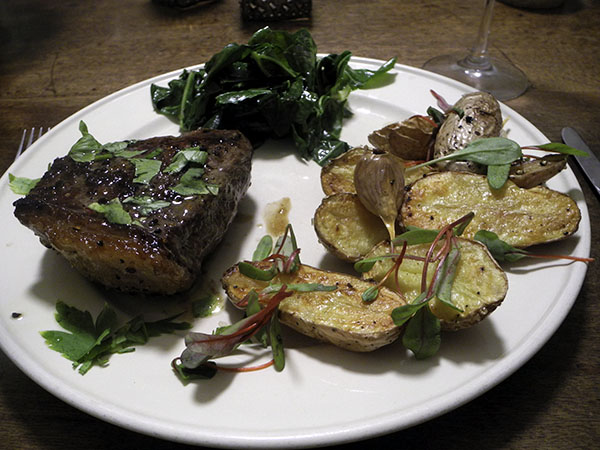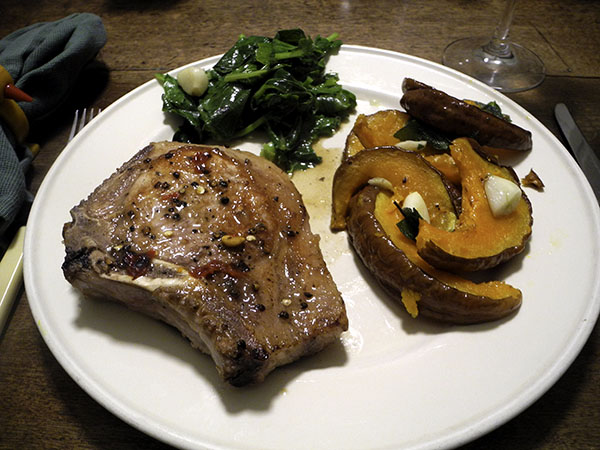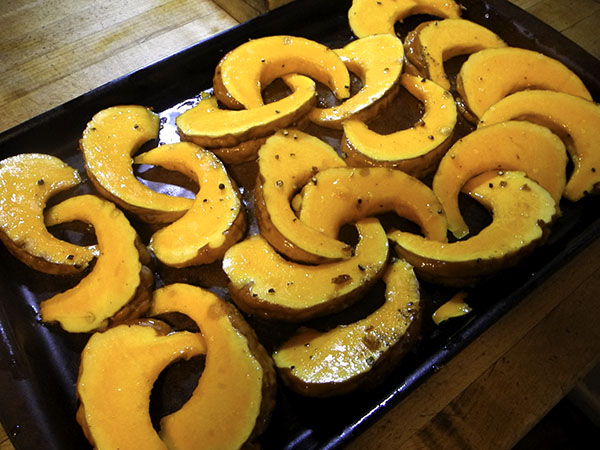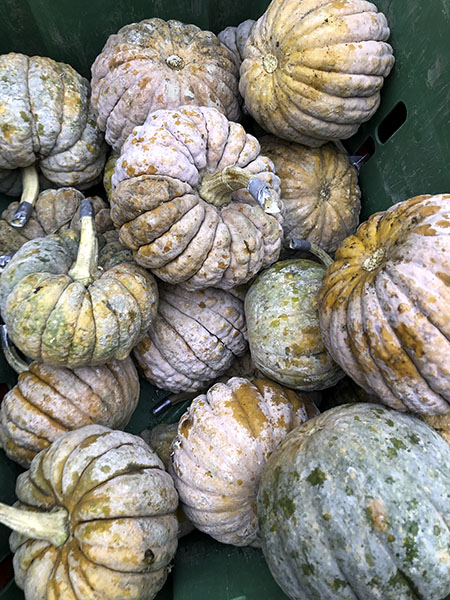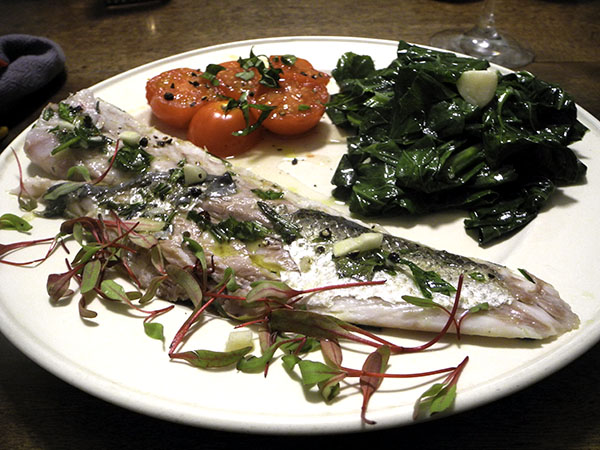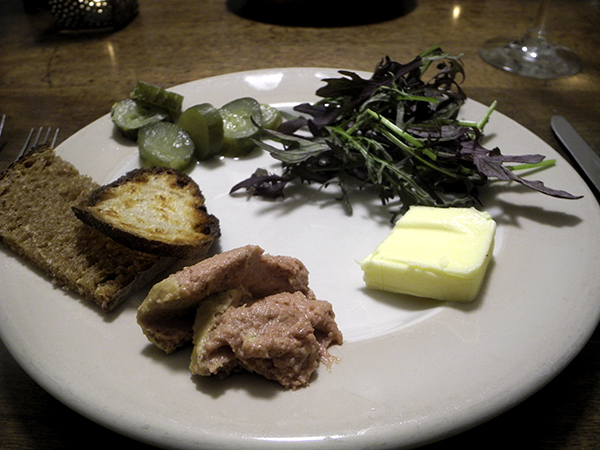
It was a meaty dinner.
The first course was a do-it-yourself project constructed around a wonderful pork mousse that had been made on a Columbia County farm, Raven & Boar, installed at the Union Square Greenmarket for the first time ever on Wednesday. where it was selling its very singular produce, farm-made pork charcuterie.
- a small 3-ounce jar of Hudson Vally Charcuterie Mousse de Foie/Pork Liver Mousse from pastured heritage, whey fed pigs
- a bit of fresh ‘red streak mustard’ from Alewife Farm
- horseradish pickles from Millport Dairy Farm
- a few tablespoons of Organic Valley ‘Cultured Pasture Butter’
- thin toasts of 2 different breads, an elegant wheat baguette from Bread Alone, and a sturdy wheat and spelt loaf, Philadelphia’s Lost Bread Co. pane di tavalo (rustic Italian-style, charred crust with notes of coffee and cacao, baked with organic bread flour, spelt, malted barley, salt, water, yeast, which the bakers say they’ve modeled after a famous loaf from the town of Genzano, near Rome)
- the wine was a fruity California (Lodi) white, F. Stephen Millier Angels Reserve Lodi White 2017, from Naked Wines
The main course stayed with the theme, but with everything cooked this time.

- two 8-ounce local Dutchess County venison t-bone steaks from Quattro’s Game Farm, in the Union Square Greenmarket, defrosted overnight and brought to room temperature, rinsed, dried, rubbed with olive oil and a very generous coating of freshly-cracked black peppercorns, set aside on the counter covered with waxed paper for about an hour, then placed over moderately high heat in 1 to 2 tablespoons of a combination of butter and olive oil inside a heavy oval 11-inch enameled cast iron pan, cooked rare to medium rare, which meant little more than 2 minutes on each side, or until juices had begun accumulating on the top, transferred to warm plates to rest while the bottom of the pan was scraped with a wooden spatula to collect the juices and 2 tablespoons of a decent brandy (I used Courvoisier V.O. this time) added to the pan and briefly cooked over high heat, until it had almost become a syrup, the sauce poured over the meat, which was then garnished with micro red chard from Two Guys from Woodbridge
- just before the venison was being prepared, nine ounces of thickly sliced, meaty spring shiitake mushrooms from Joe Rizzo’s small farm near Ithaca, Blue Oyster Cultivation, purchased from his tables in the Union Square Greenmarket, were tossed into a large enameled cast iron pan in which 2 or 3 tablespoons of butter had been melted over a high flame, the fungi seared until they had begun to brown, a little more butter and some sliced green, or spring, garlic from John D. Madura Farms added, the mushrooms salted now as they cooked a bit more, and when they were ready, some chopped parsley from Phillips Farms tossed in and combined with them, the mushrooms distributed between the 2 plates next to the chops, with a little more parsley tossed on top
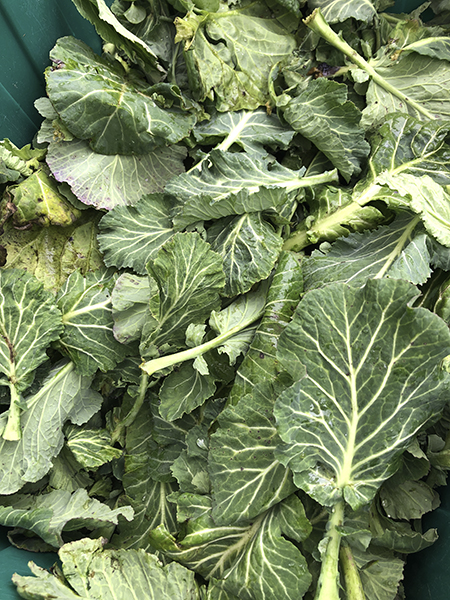
- some loose tender, sweet collard green leaves from Lucky Dog Organic Farm, only the stems below the leaves removed first, washed 3 times, drained (some of the water retained and held aside to be added, as necessary, near the end of the time the greens were cooking), chopped just a bit, then braised gently until barely softened or wilted inside a large, antique copper pot in which 2 cloves of garlic from Foragers Market had first been heated until they had softened, seasoned with sea salt and freshly ground black pepper, finished with a small drizzle of olive oil
- the wine was a Portuguese (Douro) red, Xisto Ilimitado Tinto 2016, from Crush Wine
- the music throughout the meal was the album, ‘Laurence Crane: 6 Trios, 2 Solos and 1 Quintet’, performed by the Holt Quartet
There were flowers on the table (primrose this time), as there often are in the spring, because, well…

